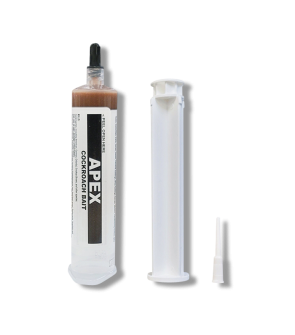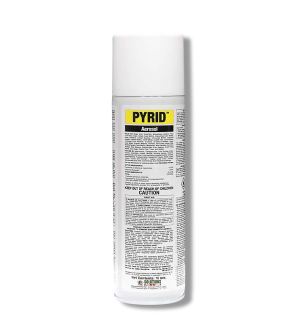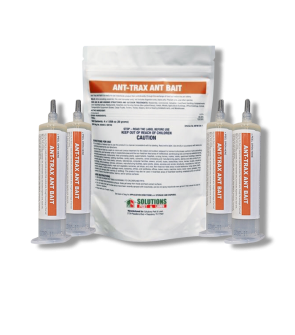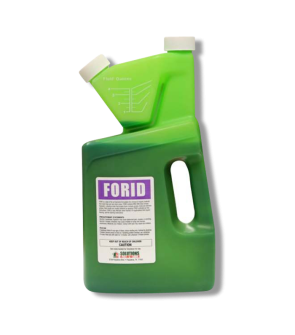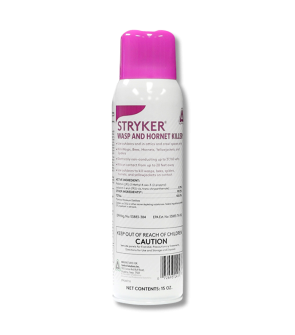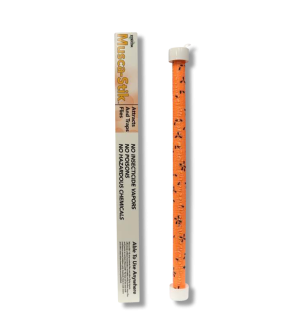Insects in Daycare
Most Effective Products
Common Insects in Daycare
Running a daycare and taking care of the teachers and students is hard work as any business owner knows. Minimizing infestations and potential risk to children and individuals in your daycare before they occur, is the best way to keep things running smoothly.
Top pests in and around daycares are ants, cockroaches, flies, and wasps. Reasons these pests can invade are readily available and unattended food sources like trash cans and areas like playground equipment can be tempting for pests to take shelter in.
Taking immediate action against these common daycare pests will help to ensure students and teacher safety as well as increase their focus on performance - not on pests. For better control, arm yourself with essential knowledge about these pests in this DIY guide.
Keep in mind that standard state, federal, and education regulations will still need to be followed when conducting any type of pesticide treatment in your region.
If you are not seeing a pest listed here, then contact our customer service team by phone, email, or in-person at one of our store locations for professional product and tip recommendations.
Ants
Ants will harbor around areas that have plenty of water and food, which is abundant in places like daycares.
Especially so if students have lunch or snack times in classrooms. Some ant species are not an immediate threat, but some can sting or bite if threatened.
Identification
 There are various ant species that can infest daycares so we will focus on general characteristics that easily identify these pests from others.
There are various ant species that can infest daycares so we will focus on general characteristics that easily identify these pests from others.
Depending on the species, ants can range from brown, black, red, yellow, white, or a combination of multiple colors.
They will have 3 body segments, a set of antennae, six legs, and vary in size from 1 mm to up to 1 inch in length based on the species.
Inspection
 Ants are mostly social insects that live in colonies along the daycare foundation, playground equipment, fire hydrants, in grassy areas, under stones, near tree stumps, and in or beside sidewalks.
Ants are mostly social insects that live in colonies along the daycare foundation, playground equipment, fire hydrants, in grassy areas, under stones, near tree stumps, and in or beside sidewalks.
Indoors, they can be found in walls, under or behind kitchen refrigerators, around water heaters, cafeteria pantries, within electrical outlets, behind window frames, under floors, voids in walls and baseboards, and other places where food and water is present.
Treatment
Step 1: Clean Immediately
 Ants often enter daycares seeking food, water, or shelter. If you are seeing ants in your daycare then this could mean there are food messes or food odor attracting these pests.
Ants often enter daycares seeking food, water, or shelter. If you are seeing ants in your daycare then this could mean there are food messes or food odor attracting these pests.
If you have noticed ants crawling in areas where children play then begin cleaning there. Vacuum up food residue then mop afterwards to eradicate crumbs, grease, and sticky surfaces.
Other surfaces that cannot be mopped, sweeped, or vacuumed will need to be wiped down with an appropriate cleaning product.
Take trash cans out of classrooms on a regular basis and close the bags when full to deter ants from entering. Replace open trash cans in classrooms with those that have a closable lid.
When trash is ready to be disposed then have the custodians or proper staff member take it to an outdoor garbage bin that is kept away from the daycare foundation. Close the lids on all garbage bins to avoid attracting ants and other pests.
Any stagnant water sites such as on floors, walls, and around plumbing will need to be wiped dry. Make the necessary repairs to stop pipes and other plumbing from leaking.
A dehumidifier may be needed for daycares with humid attics, crawl spaces, or basements. Moisture in these sites can also attract ants.
Step 2: Use Ant Baits

When food and water conditions have been addressed, you can then use an ant bait. We recommend using a gel bait to avoid less mess in sensitive areas.
Ant-Trax Ant Gel Bait is a sweet ant bait that contains an attractant and the active ingredient imidacloprid to control multiple species of ants in commercial buildings and schools.
Use 0.006 oz. (4 drops) of Ant-Trax Ant Gel Bait per square yard or 0.066 oz. (46-47 drops) of product per 100 sq. ft.
Place this product only in areas that are inaccessible to children and pets.
For spot treatments, we recommend placing this product onto an index card then placing it under dishwasher equipment, sinks, water heaters, seats, near ant trails, and under other furniture. This will help to avoid possible staining and easy replacement of baits.
This product may also be used for cracks, crevices, and voids in baseboards, sinks, countertops, water heaters, and other voids where ants harbor.
Do not treat food preparation surfaces and keep this product away from food and food contact surfaces.
Step 3: Keep Ants Out

When you see ants in your daycare, the outside perimeter of the building should be treated with a residual insecticide.
Supreme IT is a broad-spectrum insecticide concentrate that eliminates over 70 types of pests, including ants. Labeled pests that contact these treated sites will be eliminated or be repelled for up to 90 days after application.
This product may be used as an outdoor perimeter treatment for commercial structures.
Use 1.0 fl. oz. of Supreme IT in 1 gallon of water per 1,000 sq. ft. A handheld pump sprayer would work best for precise control during applications.
Spray 3 feet up the structure wall and 3 feet out on the ground adjacent to it. Also apply the spray around window and door frames, eaves, soffits, plumbing penetrations, and any cracks, cervices, or voids you see on foundation walls.
Do not allow children and pets to contact treated surfaces for at least 24 hours after application.
Cockroaches
Cockroaches are one of the pests most students, parents, and teachers don’t want to see in daycares.
For good reason too, since these pests can spread multiple diseases and bacteria on surfaces they touch. They are also responsible for causing allergic reactions or triggering asthma attacks for some children.
Identification
More than one type of roach can infest daycares, so listed below are some common attributes to easily identify them.
Cockroaches are flat, oval-shaped pests that vary in color from light to dark brown, reddish brown, or black. They also have six legs, a pair of antennae, and wings that may or may not give them flight.
Inspection
In daycares, cockroaches can be found under stoves, refrigerators, sinks, washers, dryers, inside cabinets and pantries, in cardboard boxes, under or behind shelves and cabinets, around trash cans, along baseboards, and along cracks, crevices, or voids in walls.
Treatment
Step 1: Clean Thoroughly
Like many other pests, cockroaches are attracted to areas that support food, water, and are protected.
Daycare owners should ensure classrooms are kept clean with regular vacuuming, sweeping, and wiping of all surfaces. Wipe down surfaces where children are active, lunches are stored, and on all sides of tables where food is eaten upon.
Get rid of any trash in the trash cans at the end of each day to avoid attracting roaches. Replace any open trash bins in classrooms or hallways with ones that have a sealable lid.
After removing the trash, take it to an outdoor trash bin and close the lid to deter cockroaches and other pests.
Address any food in bags, boxes, or just sitting out in the cafeteria, classroom, and food storage sites. We recommend placing all food items into a sealable plastic container so roaches cannot easily enter.
Dry off and repair any sites that gather water indoors or near the daycares foundation.
Step 2: Use Roach Bait
Stop cockroaches inside of daycares by using an approved roach gel bait. Most gel baits work slowly to ensure that all labeled roaches have enough time to feed and spread the bait to other cockroaches for full elimination.
Apex Cockroach Gel Bait is an insecticide gel bait formulated with 11 different attracts to lure and kill various cockroach species in commercial buildings and schools.
To control small roaches like German cockroaches, you will need to apply 3 drops of Apex Cockroach Gel Bait, or approximately 0.0047 oz. of product per square yard.
To control larger roaches like the American or oriental cockroaches, you will apply 5 drops of product, or approximately 0.0071 oz. of product per square yard.
Place this bait as a crack or spot treatment under baseboards, sinks, countertops, seats, around water pipes, water heaters, dishwasher equipment, and other voids or cracks and crevices where roaches have been found.
Keep this product in areas that are inaccessible to children and pets.
Periodically replace baits as needed and when the bait has become dried. If not, then check bait placements at least every 1 to 2 weeks.
Step 3: Apply Residual Insecticide
Protect the outside perimeter of your daycare from roaches by spraying Supreme IT as perimeter treatment. By conducting an outside perimeter application roaches will not be able to enter and those that do will perish after contacting treated surfaces.
We recommend mixing and applying this product with a handheld pump sprayer. Use 1 fl. oz. of Supreme IT in 1 gallon of water per 1,000 sq. ft.
You will then spray 3 feet up the structure and 3 feet out from the foundation as well as around window and door frames, eaves, and plumbing penetrations.
Keep people and pets away from treated areas for up to 24 hours after application.
Any roaches that contact treated surfaces with perish within several hours and for up to 90 days after application.
Flies
The presence of flies in your daycare is a risk to the healthcare of children and staff.
These pests can spread diseases and other harmful bacteria onto food and surfaces where children touch. They also distract a student's attention with their annoying buzzing activities.
Identification
Multiple types of flies can find their way into daycares so we will explain a few common characteristics of these pests. For proper fly identification, check out our fly control guides to know which specific fly you are encountering.
Depending on the species, flies will vary from a compact body shape to that of mosquito-like shape. They will also have a 3-segmented body, 1-2 pairs of wings, small to big compact eyes, and 6 legs total.
Flies will range in color from gray, black, light brown, green, blue, or yellow with distinct markings or none at all.
Inspection
Flies are typically found around moist, organic matter in daycares. This could be around garbage disposals in sinks, around sink or floor drains, trashcans, soda recycle bins, and pet food in cages of classrooms.
Treatment
Step 1: Eliminate Food Sources

Go through your entire classroom and vacuum, sweep, and wipe down all surfaces where children play, eat, and store food.
Throw out uneaten pet food, classroom treats, and trash in bins. Take all trash to an outside trash can bin that is several feet away from the daycare foundation.
Flies are also attracted to the waste in pest cages so proper removal will need to be done as well.
Clean out drains in classrooms with Forid Drain Gel Cleaner. Forid Drain Gel Cleaner is a ready to use drain gel cleaner that cleans grease and other organic matter out of drain pipes that may attract pests.
If drain is not regularly used, pour 1 to 2 gallons of warm water into drain.
Add 4 oz. of Forid Drain Gel Cleaner to each drain. Apply around the edge of the drain, attempting to coat sides of drain.
Best done at the end of the day when students are out of the classroom.
Step 2: Use a Fly Trap

Musca-Stik is a ready to use sticky fly trap that lures and controls flies both visually and pheromone scent.
Open the included packet then sprinkle it across the entire length of the Musca-Stik or into the bottom plastic end-cap.
Either hang the product from the roof near areas where flies have been active or set it on a flat surface that is out of reach of children and pets.
After flies have filled the trap, dispose of it. If they still continue, keep setting out new Musca-Stiks out.
Step 3: Make Direct Pest Contact

Pyrid Insecticide Aersol is a powerful botanical insecticide that kills flies and other pests on contact in schools.
Shake the can well before use. Hold Pyrid Insecticide Aerosol 18-24” away from pests and spray in short bursts.
Do not exceed 10 seconds of spray per 100 ft of commercial areas.
This product cannot be used when classrooms are in use.
Step 4: Outside Perimeter Application
Residual insecticide applications with products like Supreme IT around the outside perimeter of your daycare is the best way to control flies.
Supreme IT is an insecticide that will control flies and a broad-spectrum of other pests. Once dried, it will create a 90 day residual barrier to kill and repel any pests that touch treated surfaces.
Apply 1 fl. oz. of Supreme IT in 1 gallon of water per 1,000 sq. ft. of treatment area.
Start by spraying 3 feet up the structure and 3 feet out on the foundation next to it. Be sure to also spray around window and door frames, eaves, soffits, and plumbing penetrations.
Keep children and pets away from treated areas for 24 hours after application.
Wasps
Insect stings are the last thing any child or teacher should encounter when playing outside around your daycare. Most wasps to infest around daycares are mud daubers and paper wasps.
Though some are docile like the mud dauber, other wasp species like paper wasps can sting people if they travel too close to their nests.
Identification
For a better visual aid look at the image above: On the left is the Mud Dauber and on the right is the the paper wasp.
Mud daubers are black, yellow, orange, or metallic blue colored wasps that measure between 1/2 inch to more than 1 inch. They have six legs that hang freely when flying a pair of white or dark, rusty orange colored wings.
Paper wasps are black to brown colored pests that measure 1 inch in length. They also have six legs that hang freely during flight, but their wings are black with either red or yellow markings.
The biggest difference between each of these pests is that the mud dauber has a slender waist (petiole) about as narrow as a piece of string which separates the thorax from the abdomen.
Inspection
As an example look at the image above: A mud dauber nest on the left and a paper wasp nest on the right.
Wasps will build their nests around parts of the daycare that is completely sheltered such as where the roof overhangs, eaves, soffits, in wall voids, and under or in playground equipment.
A mud dauber nest will be constructed out of mud and have a tubular shape. Depending on the species, you will see one singular or multiple tubes.
A paper wasp nest will be constructed out of a paper-like material and have an open umbrella shape with multiple entrances.
Treatment
Step 1: Directly Spray Wasps

Best time to conduct any type of wasp treatment is in the evening when everyone has gone home. Also, a majority of the wasps will be in their nests at this time period.
Stryker Wasp and Hornet Killer is an aerosol spray that delivers a quick knockdown to paper wasps and mud daubers with a tremendous 20-foot reach when spraying.
Spray directly at the nest entrance to these pests for 6 to 8 seconds. Spray with the wind at your back and always spray at an angle.
Drench the whole nest and kill the remaining wasps that may fly out to sting in retaliation for their home being destroyed.
Step 2: Create Chemical Barrier

Since this product will need to be mixed with water, you will want to use a handheld pump sprayer.
Apply 1.0 fl. oz. of Supreme IT per gallon of water per 1,000 sq. ft. for a perimeter application.
Apply your insecticide solution as a perimeter treatment around your structures foundation. Create a barrier by spraying 3 feet up the structure and 3 feet out. Next, treat the entry points you noted earlier in your inspection.
Be sure to spray around entryways, openings created by utility pipes, and any other openings you may have found.
Keep people and pets away from treated areas until 24 hours have passed.
Key Takeaways
Common Bugs to Infest Daycares
- Common bugs to invade daycares are cockroaches, flies, ants, and wasps.
Why Do Bugs Come Into Daycares
- Pests are often attracted to daycares due to the amount of food in trash cans, floors, and amount of unattended spaces.
How to Prevent Daycare Pests
- Best way to prevent pests in daycares is to keep up with quarterly applications around the perimeter of the building.












